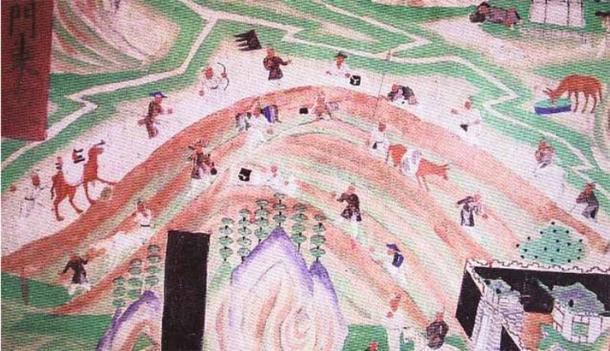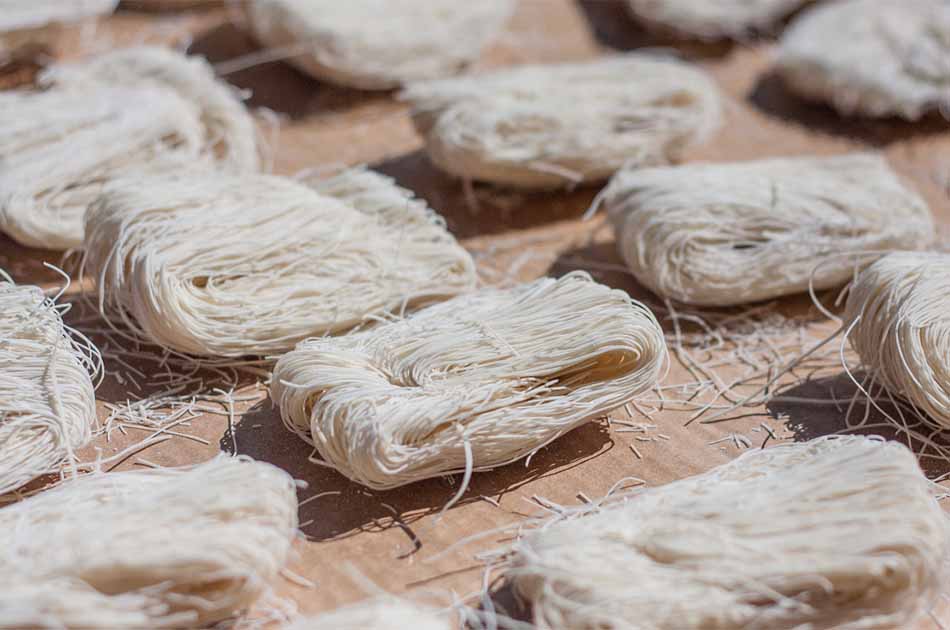Lajia Noodles: Unraveling the Enigma of the World's Oldest Culinary Delights
Have you ever pondered the origins of your beloved noodle dishes? From the picturesque shores of northern Italy to the tantalizing Pho bowls in Vietnam and the delectable Niu Rou Mian in Taiwan. Noodles have become a globally cherished culinary phenomenon. Yet the question of their birthplace has sparked debates among historians throughout the ages. One theory suggests that noodles originated in the Middle East, using semolina and a drying method. Another theory points to Central Asia as their probable birthplace. However, a widespread belief in Chinese culture asserts that noodles were first crafted in China and subsequently embarked on a westward journey through the adventures of Marco Polo.
Within the vast province of Qinghai, sprawled across the Tibetan Plateau, lies an important archaeological site that holds China's claim to noodle origin. This region, characterized by its expansive landscapes and sparse population, witnessed the discovery, or rather, the unearthing, of a simple yet extraordinary artifact: the Lajia noodles. These 4,000-year-old strands have captivated the imaginations of historians and culinary enthusiasts alike. What mysteries do these delicate tendrils of the past hold, waiting to be unraveled?
Unraveling the Ancient Threads
Among the arid landscapes of Qinghai, the remarkable Lajia archaeological site holds the key to discovering the cultural and technological developments of early Chinese civilizations. Guided by Dr. Houyuan Lu and a team of archaeologists from the Chinese Academy of Sciences, excavations at this site unearthed a trove of ancient artifacts. Among the discoveries, a perfectly preserved bundle of noodles stood out. A moment in time frozen still.
- A Deadly Bite: The Plight of the Ancient Food Taster
- Native Americans Revived Squash from 800-Year-Old Seeds
When an earthquake struck the area 4,000 years ago, the bowl containing the noodles was buried and flipped over, sealing the contents and creating an enclosed environment. A stroke of luck amidst the devastation caused by the earthquake. Despite the destruction of everything else, this precious bowl of noodles has been protected.
But how did these delicate noodles endure the test of time? The harsh desert climate and the unique conditions of the site combined to create a natural oasis for their preservation. Floodwaters, low oxygen levels, and layers of silt transformed the site into a real-time capsule, guarding these culinary wonders for millennia.

The earliest record of noodles was discovered in north western China, 4000 years ago. (youtube)
Analyzing the composition and age of the noodles involved using advanced scientific techniques. Radiocarbon dating provided an estimate of their age, while mass spectrometry revealed their chemical composition as foxtail millet, a prevalent staple crop in ancient China.
A Culinary Journey through History
Noodles boast a long history across different cultures worldwide. Ancient Chinese records from the Han Dynasty (206 BC–220 AD) document the consumption of noodles. The discovery of Lajia noodles confirms their existence in China even earlier than previously believed.
Noodles have played a significant role in the culinary traditions of civilizations, adapting and evolving over time. As a versatile source of nutrition, they were eaten by travelers, soldiers, and farmers on their journeys. From the iconic pasta dishes of Italy to the soul-soothing ramen bowls of Japan, noodles continue to captivate taste buds as a beloved and diverse culinary delight worldwide.
Apart from their remarkable age, what makes these noodles so enthralling? The ingredients used in crafting the Lajia noodles offer a fascinating twist. Unlike their modern wheat-based noodles, these ancient noodles were fashioned from millet—a grain that held great significance during that era. While contemporary Chinese cuisine prominently features rice and wheat-based dishes, the preservation of Lajia noodles serves as a testament to the overlooked role of millet in early Chinese cooking.

Different types of noodles commonly found in Asia. Millet was used to make ancient Lajia noodles. Modern-day dishes include rice and wheat-based noodles. (ProjectManhattan/CC0)
Unlocking Ancient Techniques
Intricate patterns imprinted on the noodles offer clues to their creation. How did these ancient noodle makers achieve such precision? Perhaps they used rolling pins or early pasta-making tools.
According to Patrick McGovern, an archaeologist at the University of Pennsylvania's Museum of Archaeology and Anthropology in Philadelphia, the discovery of the noodles, if the dating is accurate, is truly remarkable. McGovern highlights that the art of crafting long, slender noodles like the ones found at Lajia requires great skill. He adds that this finding shows a high degree of food processing and culinary expertise.
In recent years, there has been renewed interest in reviving traditional food practices and preserving cultural heritage. Lajia noodles have gained popularity among food enthusiasts and historians alike. People are attracted to the idea of tasting something that has remained virtually unchanged for millennia.
Preserving Culinary Heritage
While the exact origins of Lajia noodles remain a mystery, we can piece together the puzzle with the help of linguistic and cultural clues. The discovery predates written records, making it a fascinating find. Linguistic connections between the Chinese word for noodles, "mian," and an ancient Sumerian term from Mesopotamia Sumerian was the language spoken by the Sumer civilization, the earliest recorded civilization of Mesopotamia (the central Iraqi region). This linguistic link hints at the possibility of culinary traditions connecting ancient trade routes. It begs the question: what other traditions are still buried in the waterlogged soil of Lajia?

Experts have found that ancient trade possibly connected to food traditions of that time. (Public Domain)
The uncovering of a bowl of noodles at the Lajia archaeological site sheds light on the Qijia culture. It stands apart from other Chinese Neolithic cultures due to influences from northern Eurasian traditions. The Qijia civilization, which existed in the region from the Late Neolithic Period to the 1st century BC, had significant influence and left behind many artifacts. The bowl of noodles is thought to have been used for ceremonial purposes, possibly as a sacrificial offering. It was carefully placed in the square's ceremonial area, which is very important in Qijia cultural rituals.
In October 2005, the research findings of Ye Maolin and Lu Houyuan, the dedicated scientists leading the excavation and study of the Lajia site, were published in the esteemed scientific journal "Nature." This finding not only supports their years of hard work but also shows the value and significance of the Lajia archaeological site in shedding light on ancient culinary traditions and providing invaluable insights into the history of noodles.
- Shui-mu Niang-niang: The Old Mother of the Waters Who Submerged an Ancient City
- 4,000 Years Ago, Chinese Advances Were Fueled By Mass Beer Production!
Preserving the Legacy: Lajia Noodles
If these humble strands of dough, which predate written histories, were discovered so recently, what else might be discovered at the Lajia site that predates written records? On the site, chief archaeologist Ye Maolin says, "Over the years, there have been some new discoveries and new developments in the excavations of the Lajia site almost every year. Of course, this is mainly because the Lajia site is important. The special burial phenomenon and the special preservation environment of China contain rich connotations and precious remains. As long as the ground is broken, special new discoveries may appear. Our work only conforms to the actual situation." Next time you take a bite of a noodle, pause for a moment and reflect on the mysteries behind its creation. Who knows what ancient tales your meal might carry?"
Top image: The Lajia noodles are the earliest record of noodles discovered in China. Source: ting/Adobe Stock
References
2005. 4,000-Year-Old Noodles Found in China. Available at: https://www.nationalgeographic.com/history/article/4-000-year-old-noodles-found-in-china.
2021. The Oldest Noodles In The World (4,000-Years-Old) Found In China. Available at: https://www.thearchaeologist.org/blog/the-oldest-noodles-in-the-world-4000-years-old-found-in-china.
2023. Chinese scientists uncover 4,000-year-old bowl of noodles. Available at: https://www.theguardian.com/world/2005/oct/13/china.science.
2023. Qijia culture. Available at: https://www.britannica.com/topic/Qijia-culture.

















